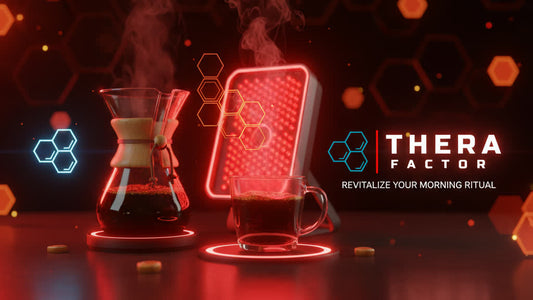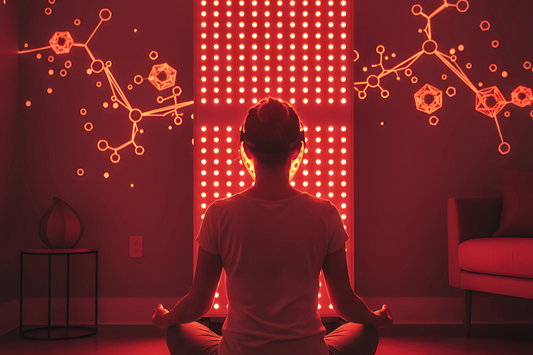
Red Light Therapy and Cancer: Benefits, Studies, and Scientific Evidence
Compartir
Red Light Therapy and Cancer: Benefits, Studies, and Scientific Evidence
Introduction
In recent years, red light therapy has gained prominence in the world of integrative medicine and scientific research, particularly in its application to complex pathologies such as cancer. While at first glance it may seem unlikely that simple exposure to light would have profound effects on cellular biology, recent studies have demonstrated the opposite. Photobiomodulation (PBM), the therapeutic use of red and near-infrared light, has shown promising results in both the prevention and treatment of various types of cancer.
In this article, we explore how red light therapy works on cancer cells, review the most relevant studies to date, and discuss its potential, limitations, and future clinical implications.
What is Red Light Therapy?
Red light therapy uses specific wavelengths of light (typically between 630 and 850 nm) to penetrate body tissues, stimulating cellular processes through mitochondrial activation. This activation leads to increased ATP production, improved cellular oxygenation, reduced oxidative stress, reduced inflammation, and activated cellular repair mechanisms.
How Does Red Light Work on Cancer Cells?
In healthy cells, photobiomodulation stimulates mitochondrial function. However, in cancer cells, which already exhibit mitochondrial dysfunction and altered metabolism (the Warburg effect), the effects of PBM may vary. Some studies show that red light can:
- Induce apoptosis (programmed cell death)
- Reduce systemic inflammation associated with the tumor microenvironment
- Improving the immune response to cancer
In cancer cells, there are two main lines of research:
- Immune Regulation and Normal Cell Support : Strengthening the immune system, increasing normal tissue repair, and supporting tolerance to aggressive treatments (such as chemotherapy and radiation therapy).
- Direct Influence on Cancer Cells : control of cell growth, induction of apoptosis or reversal of aggressive phenotypes, depending on the type of cancer, intensity and dosage of light.
However, the correct dosage, frequency and therapeutic context are essential, so that the effects are beneficial and do not inadvertently stimulate cell proliferation.
Scientific Studies on Red Light and Cancer
📚 Study 1 – Carcinogenesis and Photobiomodulation (2014)
This study evaluated the effects of red light in animal models with inflammatory predisposition. The results showed a significant reduction in inflammatory markers and a reduced propensity for tumor formation.
🛡️ Study 2 – Immune Protection in Cancer Patients (2023)
In a double-blind clinical trial with 45 cancer patients undergoing chemotherapy, red light was applied intra- and extra-orally. 87% of patients treated with PBM did not develop mucositis, compared with 100% incidence in the control group.
🎯 Study 3 – Oral Cancer and Red Light Therapy (2024)
A review published in Frontiers in Oncology highlighted that, depending on the dosage and conditions, PBM can induce apoptosis in oral tumor cells, demonstrating therapeutic potential and the need for precise protocols.
💧 Study 4 – Skin Cancers (Melanoma) (2022)
The application of red light at doses of 640 and 1280 J/cm2 demonstrated a reduction in cell proliferation in melanoma cultures, an increase in apoptosis and immune activation.
Red Light in Prevention and Cure Support
Photobiomodulation has been used in cancer patients to:
- Reduce side effects of chemotherapy (e.g., mucositis, fatigue)
- Support tissue healing after cancer surgery
- Reduce inflammation and chronic pain associated with cancer
- Improve quality of life and overall well-being
Prevention through the reduction of oxidative stress and immune strengthening is also highlighted as an indirect benefit.
Contraindications and Precautions
Despite the potential, there are precautions to consider:
- Avoid direct application to active tumors without medical supervision.
- Respect dosage and frequency protocols
- Do not use as a substitute for conventional therapy.
Recommended Protocols (with medical supervision)
- Frequency: 3-5x per week
- Duration: 10-20 minutes per zone
- Distance to panel: 15-30cm
- Expected results: In 4-6 weeks you can see a reduction in pain, inflammation and an improvement in quality of life.
Where is the investigation headed?
- Personalization of Photobiomodulation : adapt wavelengths, powers and durations according to types of cancer.
- Combination with Immunotherapy : enhancing synergistic effects with modern adaptive therapies.
- Robust clinical trials : with control groups, large sample sizes, and long-term follow-up
Conclusion
While it doesn't replace conventional medical treatments, red light therapy shows promise as an adjunct to cancer prevention and treatment. Scientific research is reinforcing the approach, and professional equipment like TheraFactor® offers safe, effective, at-home access.
TheraFactor® and the TheraPRO Line
TheraFactor® is the first Portuguese brand specializing in red light therapy technology with professional-grade devices for home use. TheraPRO panels were developed with cutting-edge technology to ensure optimal power, the correct wavelengths (630nm to 1060nm), stable emission, and complete EMF protection.
🔹 ATTENTION:
Conventional light panels lack the power or wavelength to activate mitochondria. TheraFactor® TheraPRO Panels use high-precision dual diodes, shielded from EMF, with precise emission in the therapeutic range.
Discover how you can benefit from professional-quality red light therapy at home. Visit therafactor.eu and enjoy a 5% immediate discount on the TheraPRO series. Investing in your health has never been simpler.
Why Choose TheraFactor®?
We believe everyone should have access to the latest scientific advances to improve their health at home. We develop affordable and safe technology based on scientific research. Professional red light panels for home use are certified, high-powered, and come with dedicated support.
TheraFactor®: Innovation that transforms your health.







